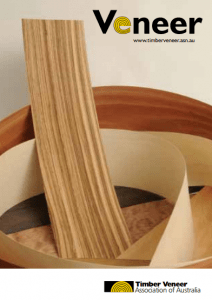The adverse effects of exposure to UV light of items made of natural fibres, wood, and plastics (e.g. fabrics, carpets, timber products, and coatings) is well recognised. The fundamental fact is that all articles subjected to UV light change colour and appearance in some way as they age. The only difference being the amount of change and the time period over which it happens.
As with all other natural or synthetic materials, veneers (as well as solid wood) will change colour over time when exposed to sunlight. The degree of colour change varies with the amount of light the coating and wood is exposed to. Generally, the surface closest to the UV light source is affected more rapidly than areas further away from the light.
The exposure to UV light usually results in a gradual bleaching of red/dark woods and a yellowing of blonde woods. Generally, the application of protective clear coatings containing UV-absorbing additives significantly reduces the detrimental colour change of veneers caused by UV radiation originating from sunlight exposure.
Research study’s results undertaken by the CSIRO and the University of Melbourne in 2007, funded by Forest and Wood Products Australia (FWPA), revealed that high quality solvent-based acrylic-polyurethane coatings systems with UV blockers (at appropriate percentages) and non-yellowing agents are the most effective protective systems and should be used to protect the veneers against sunlight discolouration. The detailed report of the study, “The mitigation of the UV-Driven Discolouration of Reconstituted and Dyed Veneers” is available on the FWPA website.
Exposure to UV light results in a gradual bleaching of red/dark woods and a yellowing of blonde woods.
It is important to highlight that generally the application of protective clear coatings containing UV absorbing additives reduces, but does not completely eliminate, wood discolouration caused by UV radiation originating from sunlight.
Coatings that do not contain the above additives may not offer optimal protection against UV discolouration. It is likely that yellowing and degradation of the coating itself may occur, resulting in higher discolouration compared to the uncoated veneer.
It is important to seek technical advice from coating companies, such as Akzolux and Mirotone, on the UV protective coatings that are most appropriate for your veneers and/or veneered products.
For more technical data see the Technical Brief on Minimisation of Colour Change of Reconstructed and Retoned Veneer on the Publications page.

